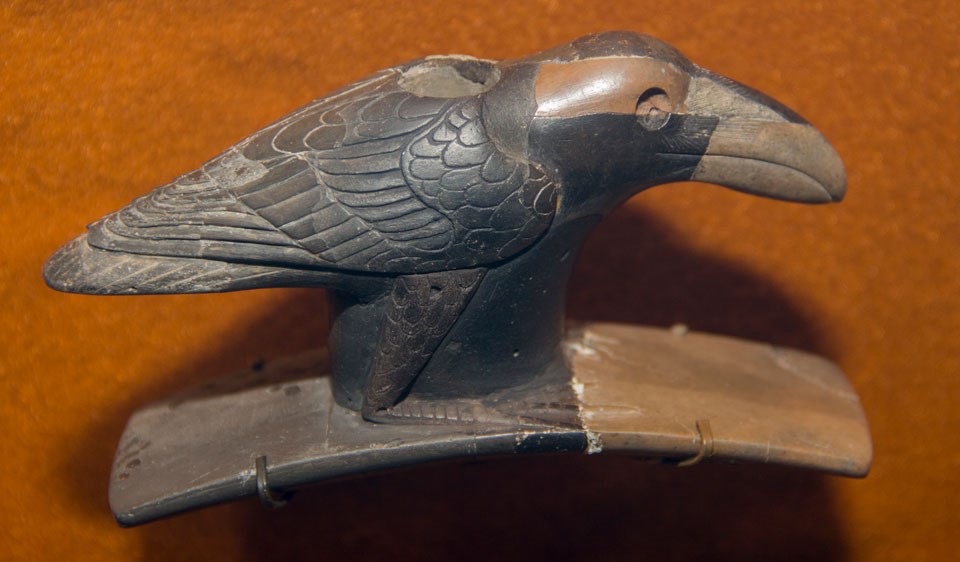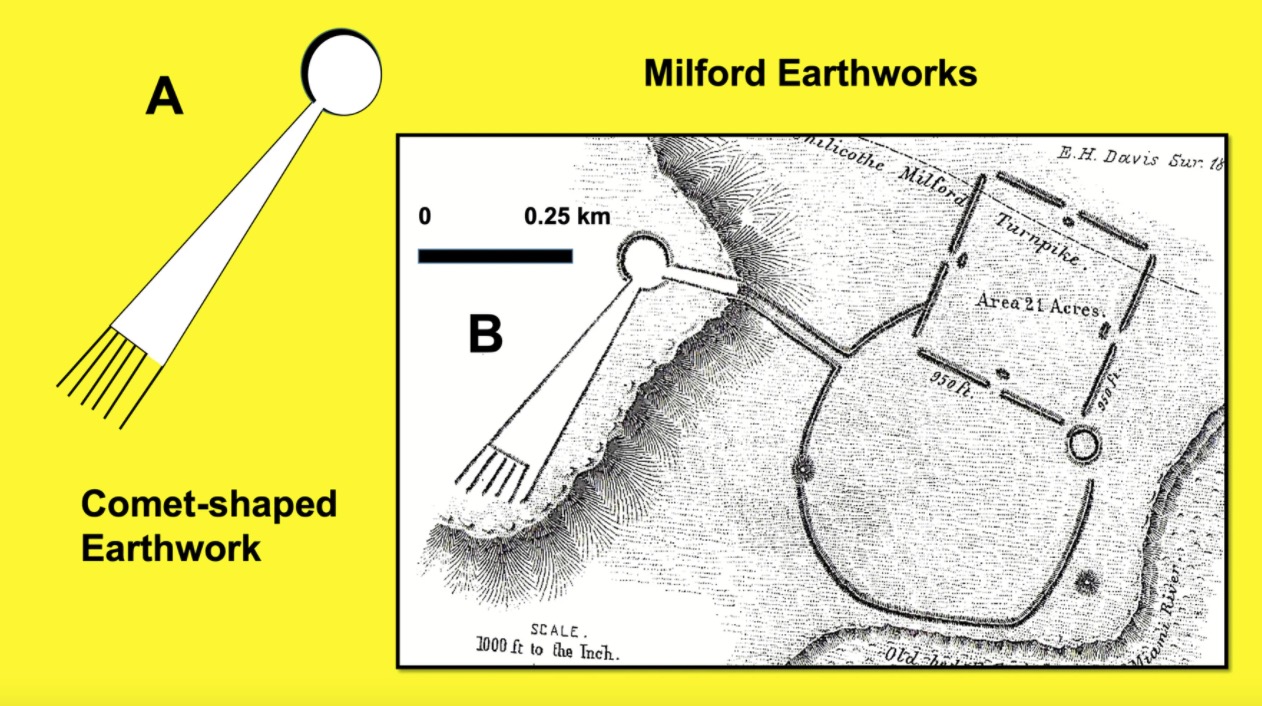Astronomy and anthropology have blended to help determine what might have triggered the decline of a major North American society 1,600 years ago.
A vibrant culture lived in the Ohio Valley from about 200 BCE to 300 CE. These people were the ancestors of many modern Native American tribes, such as the Haudenosaunee (Iroquois) and the Algonquin. What they called themselves remains a mystery, and they are now known as the Hopewell culture.
We know of their existence because they left behind incredibly symmetrical mound structures across the Ohio River Valley. Underneath these 1,600- to 2,000-year-old astronomical and ceremonial structures, archeologists have found expertly crafted artifacts made of materials sourced across thousands of miles ranging from the Rocky Mountains to the Atlantic Ocean and from Canada to the Gulf of Mexico. These objects include musical instruments, animal-shaped pipestones and fossilized megalodon teeth.
This expansive reach is perhaps the reason why so many modern Native communities across the United States have stories about a comet streaking across the sky — a dramatic event that may have severely disrupted the Hopewell culture a millennium and a half ago.
Related: Amazing photos of Comet Leonard in the night sky
In a new study, a team led by Native American anthropologist Kenneth Tankersley analyzed sediments near 11 Hopewell archeological sites and found micrometeorites, tiny fragments shed by a visiting comet. The team thinks these pieces may have triggered a violent airburst and started wildfires, devastating the Hopewell people’s crops and the landscape.
“What’s fascinating is that many different tribes have similar stories of the event,” Tankersley said in a statement released by the University of Cincinnati, where he is based.
“The Miami tell of a horned serpent that flew across the sky and dropped rocks onto the land before plummeting into the river. When you see a comet going through the air, it would look like a large snake,” he said. “The Shawnee refer to a ‘sky panther’ that had the power to tear down forest. The Ottawa talk of a day when the sun fell from the sky. And when a comet hits the thermosphere, it would have exploded like a nuclear bomb.”
Tankersley added that the Wyandot people also recount a dark cloud that rolled across the sky and was destroyed by a fiery dart.
Comets are fascinating objects that take lengthy trips around the sun. Some comets have orbits that last tens of thousands of years, for instance, and this is what makes observing them so singularly special. As a comet comes into Earth’s view, it also nears the sun, whose heat melts the comet’s ice and may trigger the shedding of material as outbursts.
In the new study, the researchers cite several pieces of evidence to support the possibility that fragments from a comet made an appearance across U.S. skies during the final chapter of the Hopewell civilization.
People in China observed many comets during that time, for example. “Between 1,800 and 1,431 years ago (220 and 589 CE), Chinese astronomers documented 69 near-Earth comets … including Halley’s [Comet],” the authors noted in their paper.

Then there is the physical evidence. According to Tankersley, the micrometeorites found at the Hopewell sites are rich in platinum and iridium, two elements that appear in impact craters. Using radiocarbon dating conducted by the Beta Analytic and the Center for Applied Isotope Studies at the University of Georgia, the archeologists determined the rough age of the event.
“The airburst affected an area bigger than New Jersey, setting fires across 9,200 square miles [23.830 square kilometers] between the years A.D. 252 and 383,” according to the statement. “This coincides with a period when 69 near-Earth comets were observed and documented by Chinese astronomers and witnessed by Native Americans as told through their oral histories.”
There’s one more suggestive sign that a comet appeared to the Hopewell people. In the paper, the authors describe the Milford Earthworks site located on the northeastern outskirts of Cincinnati. It features a comet-shaped earthwork, which the study’s authors say was “constructed near the airburst epicenter.”

The team hopes the new study shines a light on how celestial events like this proposed one may have impacted societies. “It’s hard to know exactly what happened,” said biologist and study co-author David Lentz, also of the University of Cincinnati. “But we have this area of high heat that would have been catastrophic for people in that area and beyond.”
The team plans next to study ancient pollen that may have been trapped in the Hopewell sediments, which could indicate how exactly the airburst affected the botanical landscape near their communities.
Nine Hopewell earthworks sites have been on the tentative list to become UNESCO (United Nations Educational, Scientific and Cultural Organization) World Heritage Sites since 2008.
The new study was published last Tuesday (Feb. 1) in the journal Scientific Reports.
Follow Doris Elin Urrutia on Twitter @salazar_elin. Follow us on Twitter @Spacedotcom or on Facebook.

